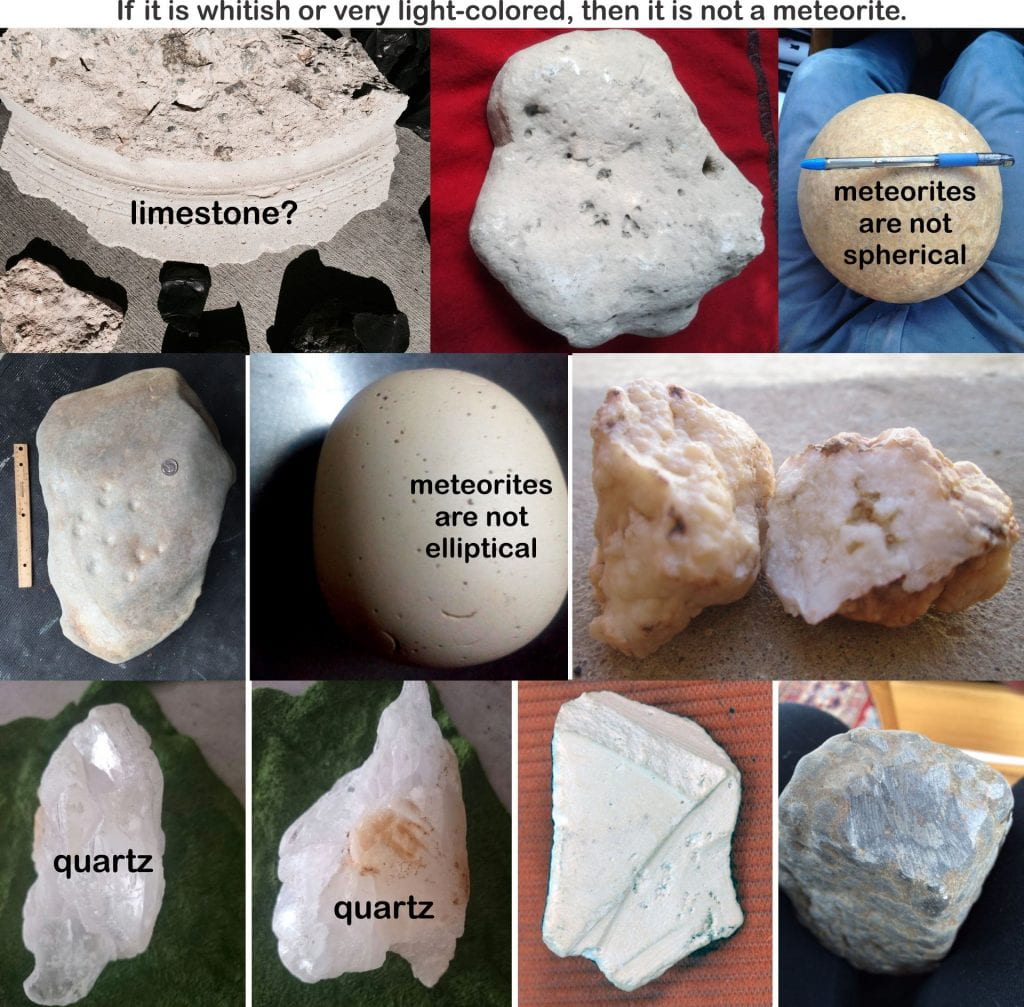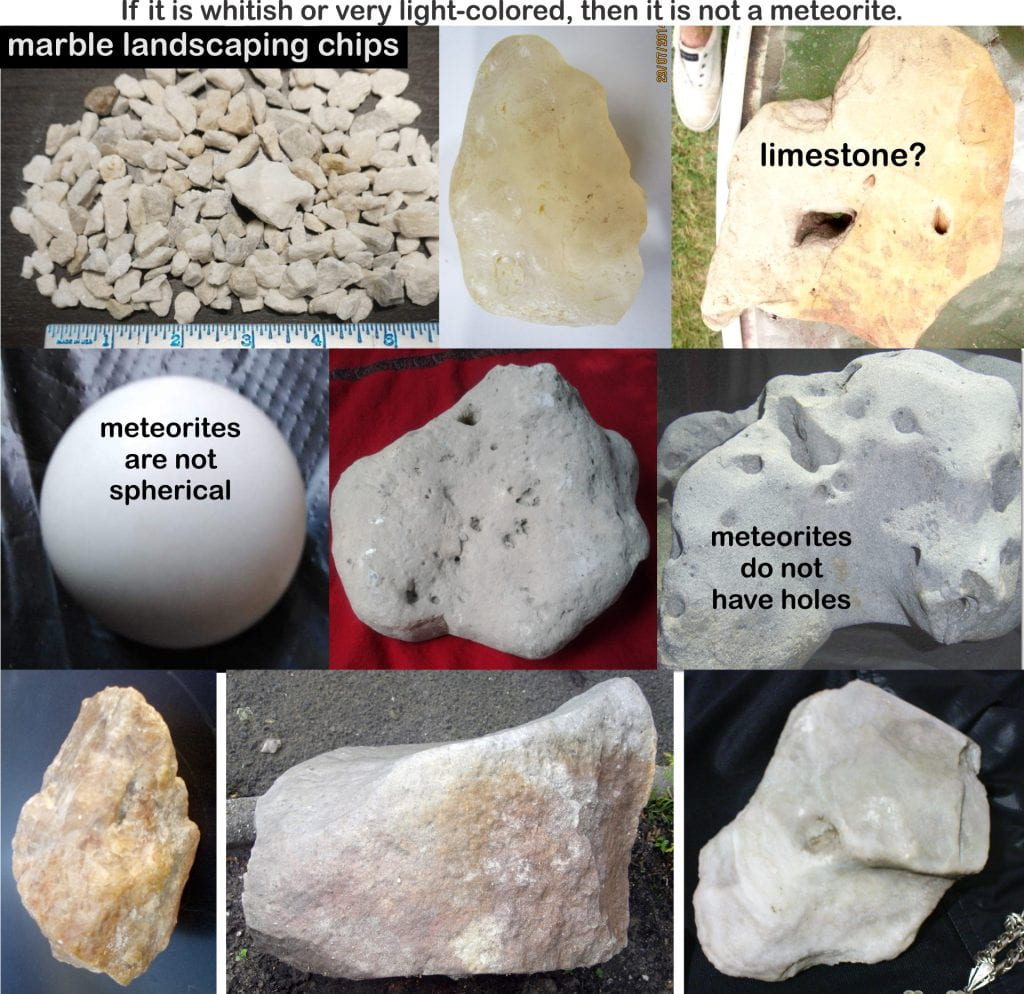Meteorites are not white or whitish, certainly on the exterior
All of these photos below were sent to me by persons who thought that the rock might be a meteorite. None of these rocks is a meteorite and none has a fusion crust.



I have looked for the whitist meteorite that I could find. Here are photos of the Jilin ordinary chondrite. Jilin fell in China on 8 March 1976. It is a big meteorite. The official mass is about 4 metric tons, making it the largest stony meteorite ever recovered.

Jilin is so large that most small pieces do not have a fusion crust. Our sample (upper left) is broken on all sides. (The plastic ring in the photo is 2.5 cm in diameter.) Type-5 ordinary chondrites have been thermally metamorphosed (“cooked”) and recrystallized to the point where chondrules are no longer distinct. I am not a chondrite expert, but I suspect that the metamorphism also leads to the light color of the interior (upper left) compared to type 3 chondrites that have experienced minimal metamorphism. Chondrules are not particularly distinguishable in H5 chondrites, but some possible candidates are shown on the lower left (all to same scale, submillimeter).
H chondrites contain 15-20% iron-nickel metal by mass. Rusty spots are discernable in the upper left photo and that is the most important clue that the light-colored rock is, in fact, a meteorite. In the upper-right image I have stretched the color saturation in a way that leaves the background gray-cloth gray. The rusted metal is easier to see here. I do not know whether the metal was rusty at the time the meteorite landed or that it is all terrestrial oxidation since 1976. Pyroxenes and olivine are the two most abundant silicate minerals in ordinary chondrites and I presume that these minerals lead to the greenish matrix color of this color-stretched image.